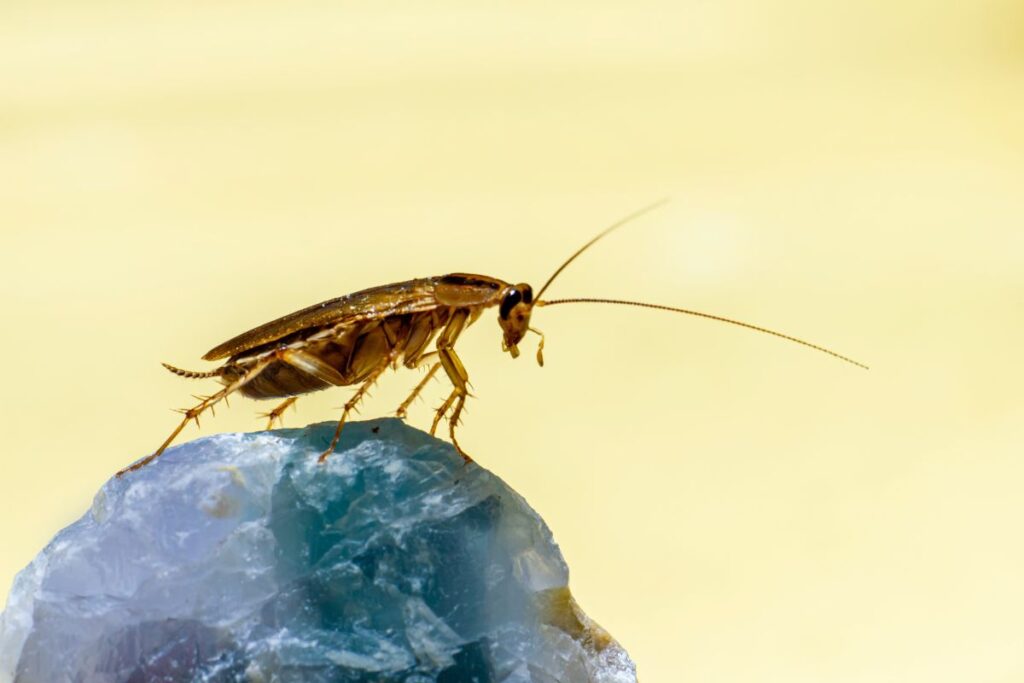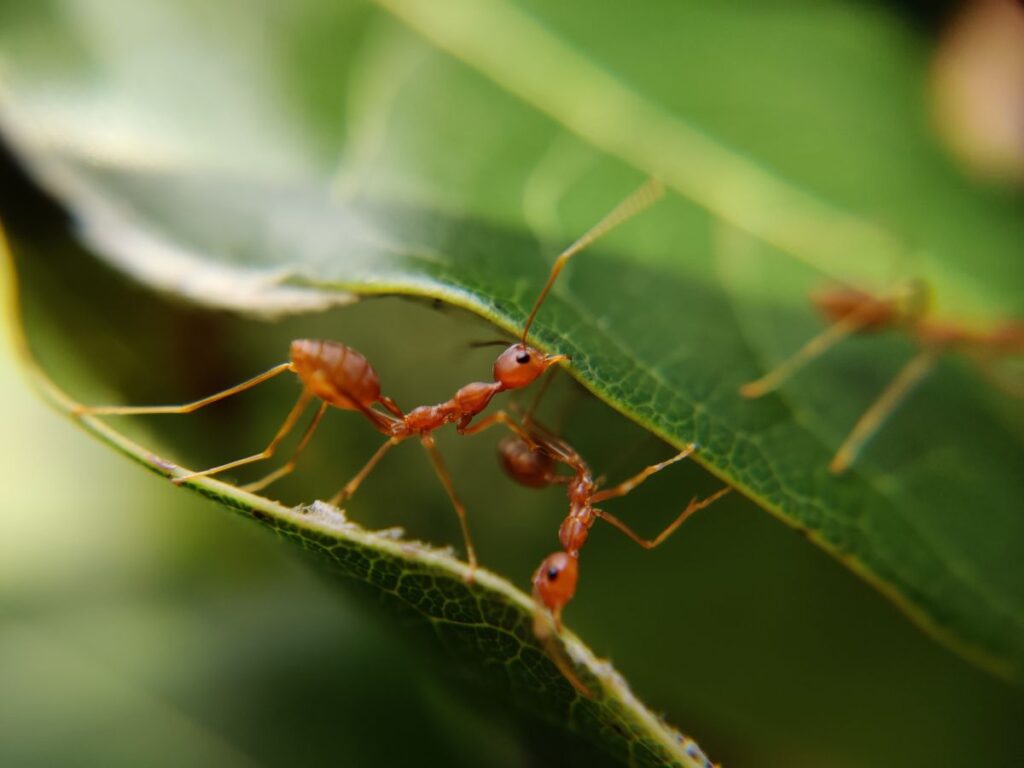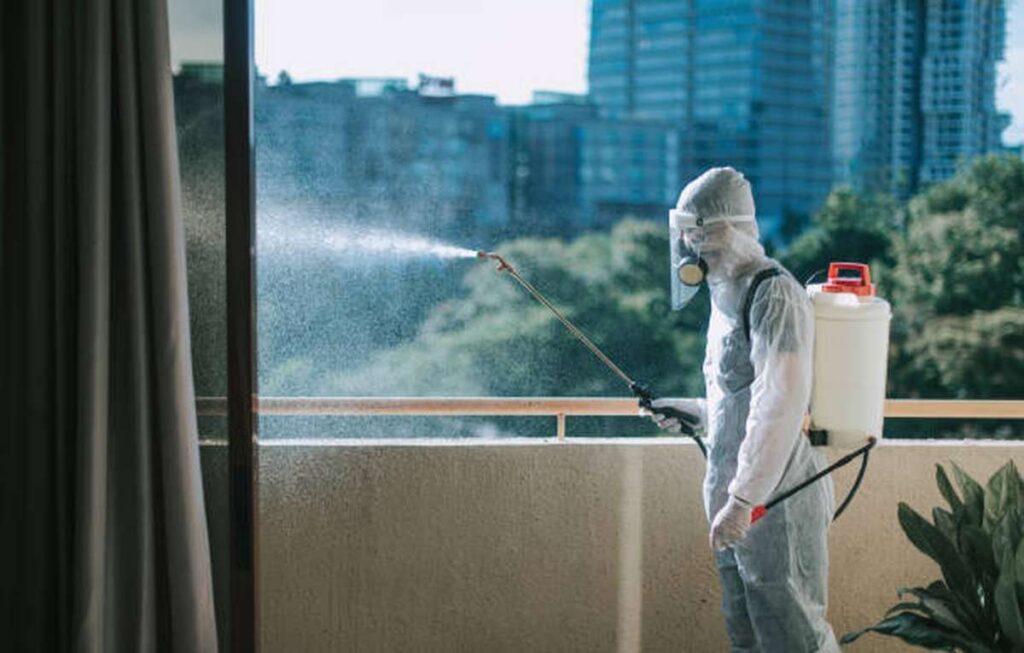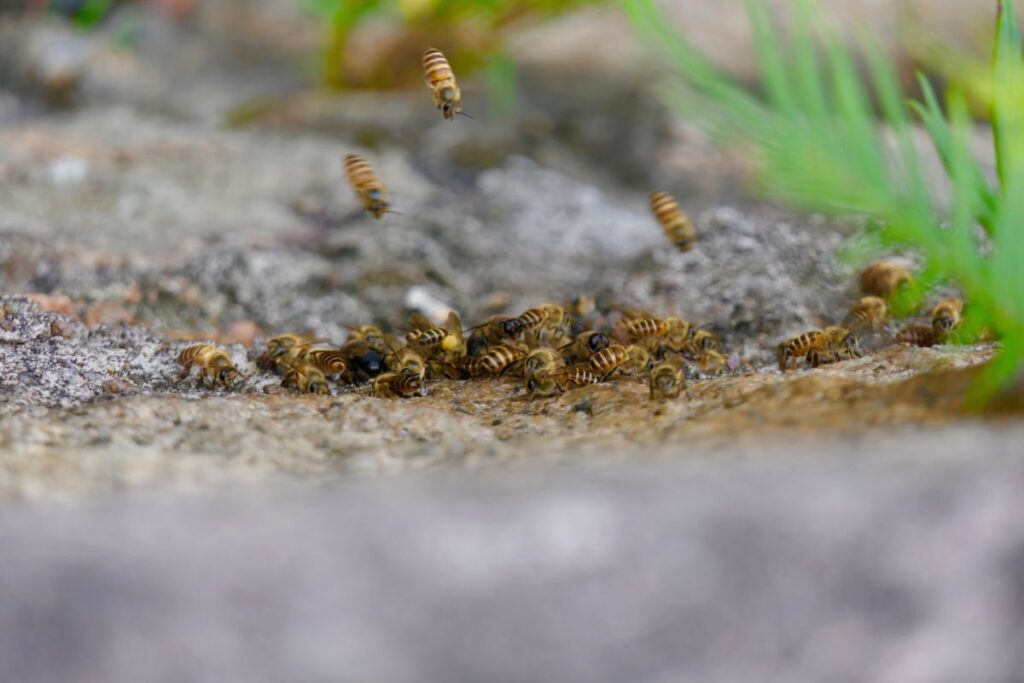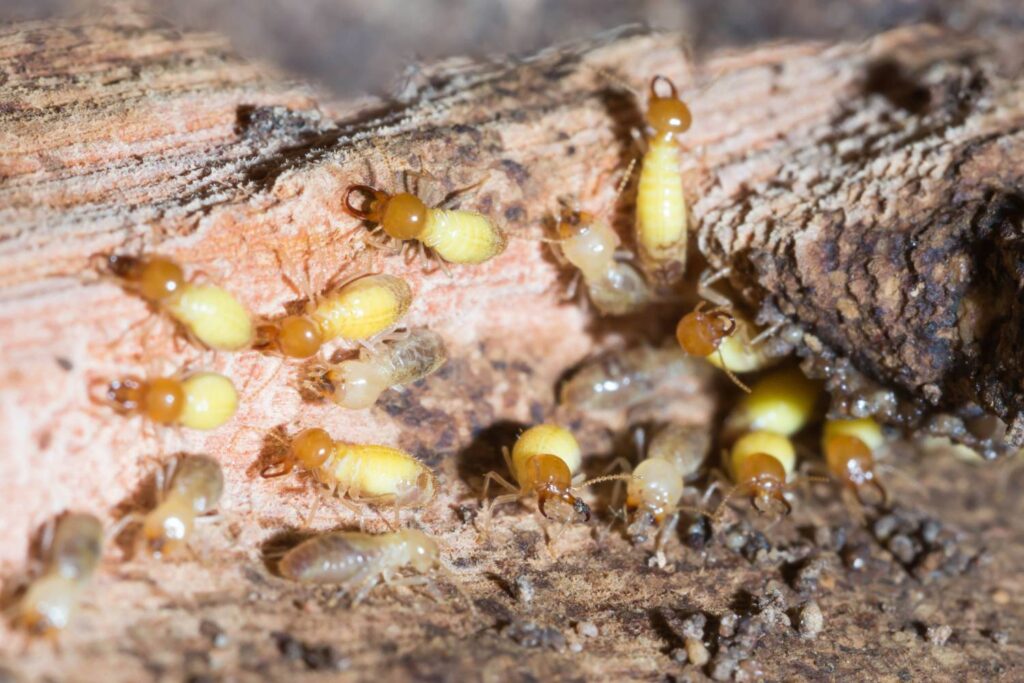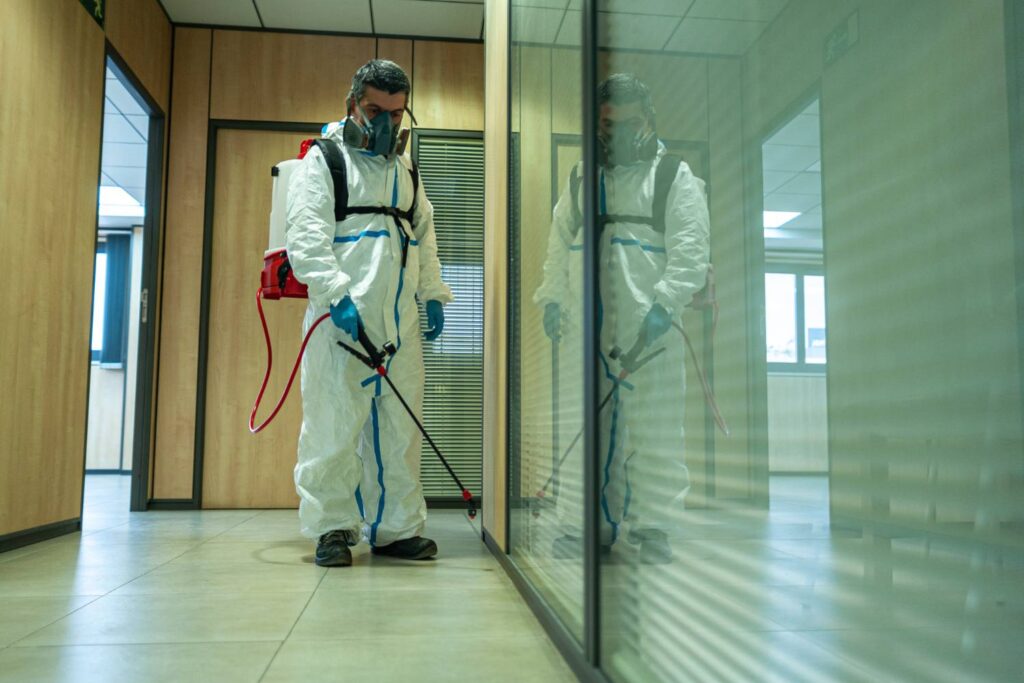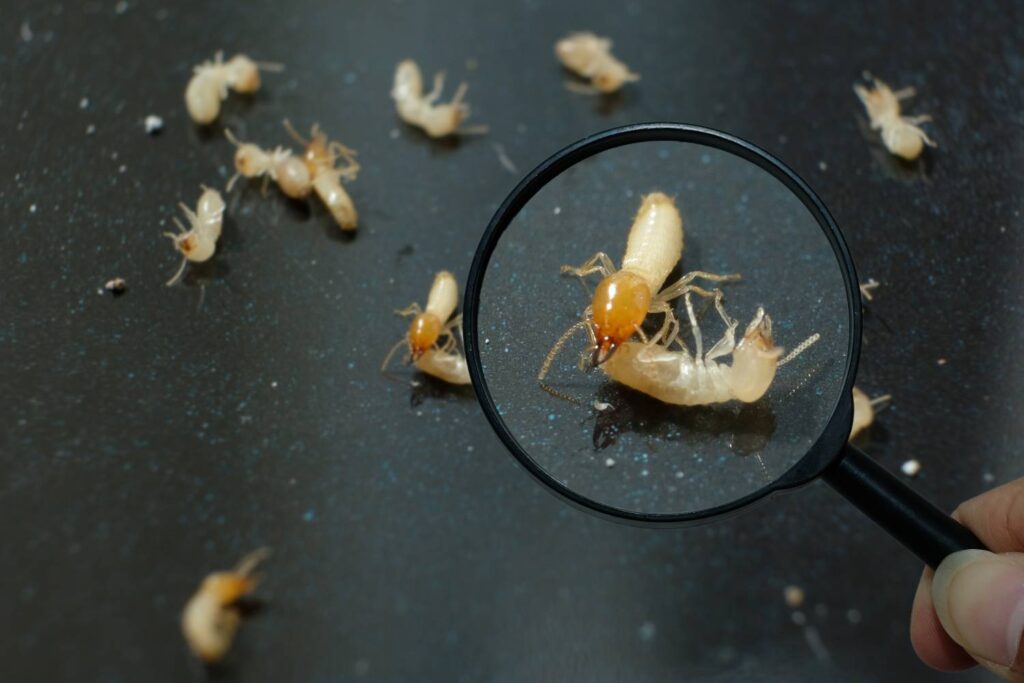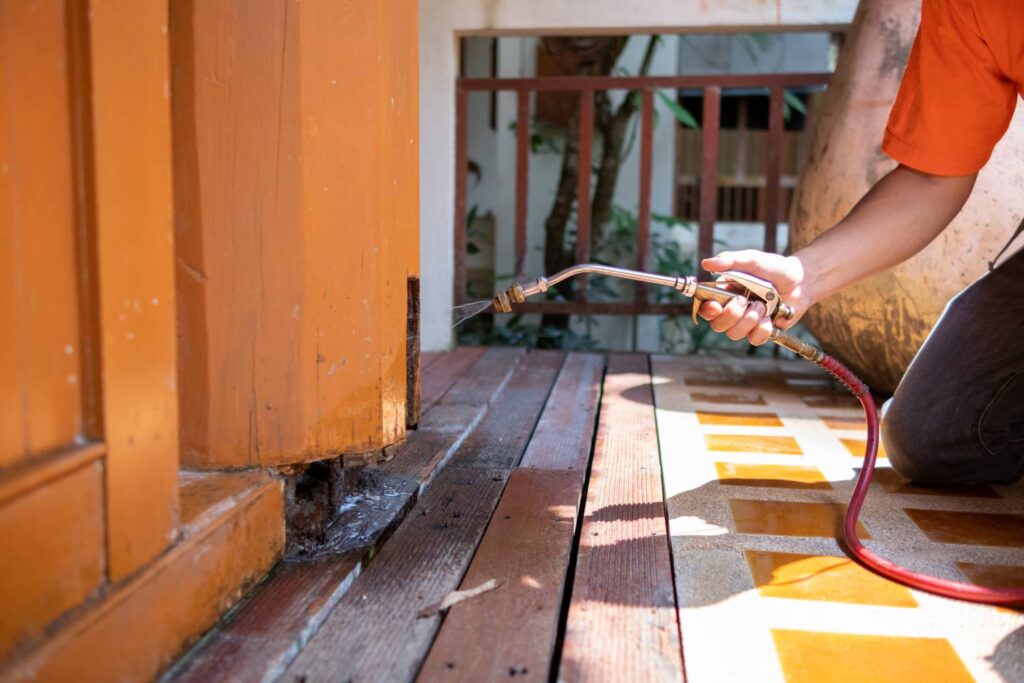Most homes eventually have to deal with an insect infestation. Ants in the kitchen and mosquitoes in the living room contribute to an unpleasant and unsanitary environment. Insects are a major problem since they may ruin your home and transmit sickness. Unfortunately, most people don't know how to prevent insects from taking over their homes. They frequently use chemical pesticides, which are risky for humans and wildlife.
The great news is that you may maintain your home pest-free without resorting to dangerous pesticides in several different methods. Of course, keeping the place neat is the first order of business. Keeping the house tidy by vacuuming, mopping, and putting out the garbage regularly will discourage pests. It is also important to plug any holes or openings they may have found to prevent pests from entering the home. Finally, you may employ Essential oils and plants as natural insect repellents.
This blog will explore non-chemical approaches to pest control in the home. We'll review everything you need to know, from keeping things clean to closing up cracks and crevices to keep the bugs at bay. We'll also discuss several effective natural bug repellents you may apply at home. Following these easy steps or guidelines, you can keep your home clean, sanitary, and bug-free. To rid your home of insects, you must read the whole text.
How To Identify Sources Of Insect Attraction?
Light, fragrance, and food sources are just a few environmental cues attracting insects. Insect populations may be managed and infestations avoided if the causes of their attraction are known. Insect attractants can be pinpointed by following these guidelines.
Light
Many insects will be drawn to a bright illumination source even at night. They may be attracted to porch lights, street lamps, and other manufactured illumination. Consider utilising low-wattage bulbs, installing motion sensor lights, or turning off outdoor lights when they aren't in use to lessen the appeal of these sources to insects.
Scent
Scents may be a powerful lure for insects. Mosquitoes, for instance, are drawn to the smell of sweat, whereas fruit flies are drawn to the aroma of rotting fruit. Using unscented personal care items, refrigeration of ripe fruit, and early cleanup of spills and crumbs can all help limit insect attraction to fragrance.
Food Sources
If they find a food supply, pests may be a problem outside and inside the home. Insects often eat scraps from table scraps, discarded food, and compost. Keep garbage can lids securely closed, cover compost piles with a layer of dirt or leaves, and store pet food in airtight containers to lessen the likelihood of attracting insects.
Standing Water
This kind of water is a breeding ground/place for mosquitoes and other insects. Therefore, getting rid of any pools of water around your house is necessary. Saucers, birdbaths, and blocked gutters all fall into this category. At least once every week, you should clean out your birdbaths and fill them back up with water.
Clutter
Cluttered spaces provide ideal conditions for insects to hide and multiply. Clutter attracts insects, so keep your home neat. Get rid of paper and cardboard stacks in storage locations like closets and basements.
Plants
Particular flowering plants serve as magnets for particular insect species. For instance, those in the rose family attract aphids, whereas those in the bean family attract Japanese beetles. Selecting plants naturally resistant to pests and diseases and avoiding planting them in dense groupings are two ways to lessen the likelihood of attracting insects.
Effective Techniques for Keeping Pests Out of the House
Sealing Doors: Fortifying against Crawling Insects
To begin the quest for pest prevention, homeowners should thoroughly inspect their doors and windows for cracks or openings that require sealing. These entry points are commonly exploited by crawling insects seeking access to the house.
Reinforcing or Repairing Screens: Warding off Flying Pests
During the hottest and most humid days of summer, reinforcing or repairing screens becomes a valuable strategy for keeping pests at bay. By installing screens over all openings, such as windows and doors, homeowners create a barrier against mosquitoes, flies, and other airborne nuisances.
Yard Maintenance: Discouraging Breeding Grounds
Consistent yard upkeep serves as an effective measure to prevent insects, rodents, and birds from turning the surrounding area into a breeding ground. Simple tasks like emptying water from plastic containers, covering trailers and bins, storing water in dry areas, and promptly disposing of unused materials reduce the likelihood of infestations.
Cracks Repair: Blocking Unseen Intruders
Tiny insects can exploit unnoticed cracks and crevices to infiltrate homes. Vigilance is necessary when inspecting the house's exterior for signs of damage, including cracked or missing siding, foundation fissures, loose bricks, or decaying wood. A simple test with a pencil can reveal potential entry points that need attention.
Sealing around Pipes and Entry Points: Securing Utility Access
Utility pipes, such as power, phone, and AC cables, often create vulnerable entry points for pests. A thorough examination of the house's perimeter is advised, as these openings can be found anywhere from ground level to the roof.
Covering Large Openings: Concealing Vents and Flues
Certain large openings, such as roof vents and chimney flues, pose a challenge when it comes to concealment. However, for larger openings that require ventilation, solutions like chimney caps or wire mesh can be employed to maintain protection.
Restricting Access to Food: Deterring Insects' Presence
Insects share the same basic needs as humans, including access to food and water. Maintaining clean and clutter-free countertops and storage containers is essential for safe food preparation and storage. Dishes and pet food should be promptly washed and stored after use, as cluttered living spaces provide ideal conditions for insect reproduction.
Proper Rubbish Management: Preventing Vermin Infestations
Appropriate storage and treatment of trash are pivotal in deterring pests from feasting on garbage. Food-related waste should be confined to kitchen garbage cans with tightly fitting lids. Regularly emptying the trash and disinfecting wet household trash cans are additional measures to keep vermin at bay.
Clear Foundations: Minimising Insect Entry Points
As the primary point of contact between the home and the soil, foundations frequently serve as entry sites for insects. To reduce the risk of termite infestation, homeowners should keep wood, leaves, mulch, and grass clippings stacked and stored away from the house.
Encouraging Natural Predators: Nature's Pest Control
Harnessing the power of natural predators is an effortless approach to pest management. Many bird species rely on tiny insects for sustenance. Homeowners can attract beneficial birds by providing nesting trees and shrubs. Regularly refreshing water sources and incorporating a bird food feeder can supplement their natural diet and contribute to pest control efforts.
What Are Household Insects?
Insects, spiders, and rodents that invade homes and cause damage or pose health risks to their occupants fall under the umbrella term "household pests." All common domestic bugs are drawn there for the same reasons: to nest, eat, and procreate.
Household Insects
Do you wanna know the significance of pest identification in the home? The most prevalent pests and household insects in Australia are described here.
Cockroaches
In Melbourne, Australia, cockroaches are among the most common household pests. In colder areas, they are attracted to dwellings that provide warmth since they thrive in moist environments.
Unfortunately, cockroaches are notorious for spreading many illnesses to people through their interactions with our food. Some of the most frequent ailments they spread are gastroenteritis, salmonella, and dysentery, but their droppings have also been linked to increased eczema and asthma in children.
Termites
Termites are the most costly pest in Australia, inflicting an annual average of $700.0 million in property damage. Sydney, Adelaide, Melbourne, Perth, and Brisbane are some of the mainland cities with these pests. However, they may be found anyplace with consistently warm temperatures.
⅓ of all Australian homes may have a termite infestation at some point throughout their lifetimes. However, because of the high expense of fixing termite damage and the difficulties it might cause when trying to sell a house, dealing with a termite infestation is an emergency that needs immediate attention.
Spiders
Australia is home to more than 2,000 kinds of spiders, including some of the most venomous in the world. Some spiders can be lethal if their bites go untreated, while others may cause an unpleasant but not life-threatening injury.
Spiders love to take refuge in dark, out-of-the-way places like closets, bookshelves, eaves, and vents. They're attracted to dim, moist places and spin webs to catch prey. Spiders are not limited to the outdoors; certain species may be discovered in and around the house in locations.
Ants
While most ant species are just an annoyance rather than a threat, some of the 1,300 species found in Australia are anything but. For instance, bull ants may be found in every state. They're antagonistic, and their bite can hurt allergic people. Because of this, ants are among Australia's most annoying household pests.
The Argentine ant, the carpenter ant, the coastal brown ant, and the common black house ant are some other ant species that may be found in Australia. There have been reports of infestations caused by all of these ant species. Although ants pose fewer health risks than common pests like cockroaches and mosquitoes, they can spread harmful germs and fungi.
Fleas
Fleas are a major problem in the home despite their small size. First, they're useless, and many others agree with us. Even worse, these microscopic terrors aren't limited to only the outdoors. In addition to infecting people who come into touch with infected animals, they will also attach themselves to your pets.
Once fleas have invaded a home, they may be nearly impossible to exterminate. Flea infestations can quickly become catastrophic since only one female flea can produce hundreds of eggs. In addition, the larval stage of the flea life cycle can be shortened from three months to three weeks under optimal circumstances.
Wasps And Bees
While Australia's 1,500 or so native bee species are essential to the health of our ecology, they can become a major nuisance if they make their way indoors. The good news is that beehives are rarely constructed next to human dwellings.
On the other hand, wasps may conceal their nests in unseen places like eaves and beneath verandas. The stings of bees and wasps can be excruciating.
Flies
In Australia, flies have the dubious honour of being the most bothersome pest. However, we have also come to tolerate their presence in and near our homes, families, and pets since they have become almost synonymous with our nation.
It would be best if you didn't handle them differently than a cockroach or a mosquito because they are frequent in Australian homes. Diseases like salmonella and E. coli may be transferred by flies, making them a threat to both human and animal health. The March fly and the horse fly are two types of insects that are particularly annoying and can cause severe bites.
Rodents (Mice And Rats)
The early European settlers brought rodents like mice and rats to Australia. They have since colonised every region of the United States, where they spread disease, muck up dwellings, and cause structural damage. There are two basic ways these pests endanger people and animals.
In addition, nausea, fever, and edema are common complaints among those suffering from these diseases. This indicates that even healthy adults and children can be harmed by a mouse or rat infestation and that the risk is far higher for those with compromised immune systems.
Mosquitos
Everybody knows what a mosquito is by its annoying buzzing sound and painful bites. They eat in the start of the day and again before nightfall, when most of us relax.
You may cram mosquitoes away, but they'll keep returning for more. They thrive in moist environments and may usually be found in or near water. Depending on the species, the mosquito life cycle may last four days under optimal conditions.
Conclusion
The most useful information in this article is about alternatives to chemical pesticides. You can use essential oils and certain plants as natural bug repellents, and you should also maintain the place clean. Environmental cues such as light, scent, and food can all attract insects; understanding the origins of attraction can help with the management and prevention of infestations. You should read the full thing if you want to get rid of bugs in your house. If you want to reduce the number of insects around your home, you should use low-wattage light bulbs, and motion-sensor lights, and switch off any outside lights that aren't in use.
Crawling insects often enter a home through small cracks or gaps, so sealing these areas can help keep them out. You can lessen the attractiveness of artificial light to insects by using lower-wattage bulbs, setting up motion detectors, and switching off outdoor lights throughout the day. Screens are a great way to keep unwanted pests out of your home. Reduce the likelihood of an insect infestation by keeping your yard in good condition, fixing any cracks you find, sealing around pipes and entry points, covering any major gaps, limiting pests' access to food, keeping your trash in check, and keeping your foundation clean. In addition to repairing or reinforcing screens, other helpful strategies for warding off pests include keeping the yard neat and tidy, fixing any cracks, sealing around pipes and entry points, covering any large openings, limiting pests' access to food, keeping the trash cans sealed, and keeping the foundation clean.
Trees and bushes suitable for nesting and the addition of a bird feeder are two ways in which homeowners can entice birds that are useful to their gardens. Cockroaches, spiders, and rodents are all examples of household pests that can cause damage to homes and even pose health risks if left unchecked.
Termites are the most expensive pest in Australia, causing an annual average of $700.0 million in property damage. Cockroaches prefer warm homes. The potential presence of a termite infestation in one in every thirteen Australian homes constitutes an urgent situation. Common household pests in Australia include spiders, ants, fleas, wasps, and bees, all of which can transmit disease-causing bacteria and fungi.
In the same way that untreated spider bites or termite infestations can be fatal, so can the bites of either. Fleas and ants can pose health risks to humans and animals alike. Despite their importance to our ecosystem, wasps and bees may be a real pain if they find their way inside. Rodents (mice and rats) spread disease, contaminate living spaces, and can even cause structural damage, but flies are the most annoying insect in Australia. Even more annoying than dry air is the presence of mosquitoes, which may live for up to four days in the right conditions.
The most annoying pests are flies, but rodents also carry diseases, contaminate living spaces, and can even cause structural damage. Mosquitoes are notorious for both their noisy buzzing and their itchy, painful bites.
Content Summary
- Importance of keeping a house insect-free
- Risks associated with chemical pesticides
- Non-chemical methods to maintain a pest-free home
- Keeping the house clean discourages pests
- Plugging holes and openings to prevent pest entry
- Using essential oils and plants as natural insect repellents
- Identifying sources of insect attraction
- Managing light sources to reduce insect attraction
- Controlling scents to limit insect attraction
- Proper food management to avoid attracting pests
- Eliminating standing water to prevent mosquito breeding
- Clearing the clutter to minimise hiding places for insects
- Selecting plants resistant to pests to reduce insect attraction
- Sealing doors to prevent crawling insect entry
- Reinforcing or repairing screens to keep flying pests out
- Yard maintenance to discourage insect breeding grounds
- Repairing cracks to block unseen insect intruders
- Sealing around pipes and entry points to secure against pests
- Covering vents and flues to conceal large openings
- Restricting access to food to deter insects
- Proper rubbish management to prevent vermin infestations
- Clearing foundations to minimise insect entry points
- Encouraging natural predators for pest control
- Common household insects in Australia
- Dangers of cockroach infestations and diseases they spread
- Impact of termite infestations and the need for immediate attention
- Types of Spiders in Australia and their habitats
- Ant species in Australia and the annoyance they cause
- Challenges posed by flea infestations and their ability to multiply rapidly
- Risks associated with wasps, bees, flies, rodents, and mosquitoes
Frequently Asked Questions About Insect Free House
Keeping your house insect-free is important for various reasons, including preventing property damage, protecting your health, and avoiding infestations. Insects such as termites, ants, and cockroaches can cause significant structural damage to your home and also spread diseases.
You can prevent insects from entering your home by sealing all cracks and crevices, using door sweeps, keeping your kitchen and dining areas clean, storing food in airtight containers, and using screens on windows and doors. Regular cleaning and decluttering can also help reduce the likelihood of infestations.
You can prevent mosquito infestations in your house by eliminating standing water, installing screens on windows and doors, using mosquito nets, and using mosquito repellents. You can also plant mosquito-repelling plants such as citronella, lavender, and basil in your garden.
It is recommended to check for signs of insect infestations in your house regularly, at least once a month. Signs of infestations include sightings of insects, insect droppings, chewed-up materials, and unusual smells. Early detection and intervention can prevent infestations from getting out of control.
You can keep your pet safe from insect bites by using pet-friendly insect repellents, checking your pet for ticks and fleas regularly, keeping your pet's food and water bowls clean, and keeping your pet's sleeping area clean and free of clutter. You can also use flea and tick collars and treatments to prevent infestations.

